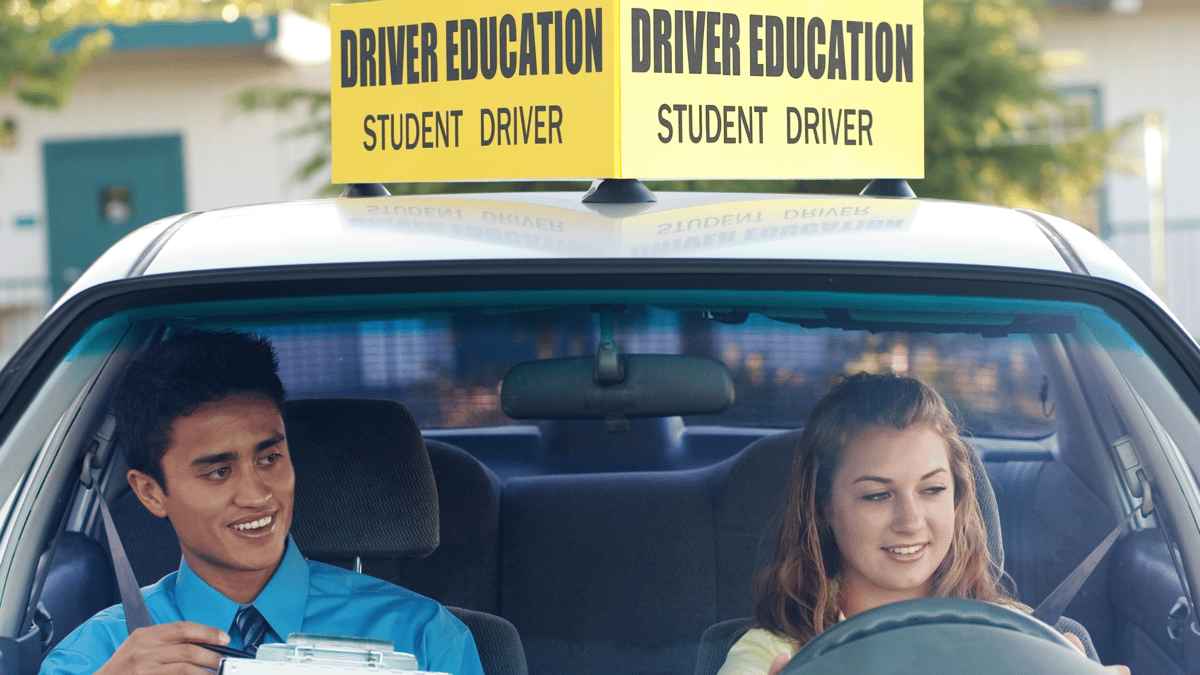Article
10 Essential Summer Driving Safety Tips

It’s summertime and the road is calling. But before you crack the windows and blast the playlist, it’s worth taking a few minutes to brush up on this year’s top summer driving safety tips.
Why? It may seem counterintuitive given the slow pace of the season, but traffic fatalities are actually more common in summer than winter, according to the National Highway Traffic Safety Administration (NHTSA). Whether it boils down to distracted teen drivers or overheating engines, it seems warm-weather driving comes with its own set of risks.
So whether you're commuting to work or planning the ultimate summer road trip, use these safe summer driving tips to protect yourself, your passengers, and your car.
1. Prep Your Vehicle for Hot Weather
Wondering how to prepare for summer driving? Start with your car.
According to the NHTSA, a well-maintained car is one of your best defenses against summer breakdowns. That includes:
- Testing your battery (heat wears it down faster)
- Topping off fluids like coolant and oil
- Inspecting belts and hoses for cracks or wear
Even something small like low windshield wiper fluid can turn into a safety issue in dusty or buggy summer conditions.
2. Check Your Tires (And Check Them Again)
Hot pavement and under-inflated tires don’t mix. Tire blowouts are more common in the summer thanks to a combination of increased road temperatures and long-distance travel.
AAA recommends checking your tire pressure monthly and before every road trip. During that check, do a visual inspection to make sure your tires are free of visible damage and signs of excessive wear. Keep a regular rotation and alignment schedule so your tires stay in good health longer.
Need a reminder? Add “check tire pressure” to a monthly summer driving checklist on your phone. And remember, summer tire safety means checking your spare tire, too.
3. Keep Your Cool… Literally
Heat-related car issues are no joke. If your A/C goes out or your engine overheats in the middle of a long drive, things can get dangerous fast.
To stay safe:
- Get familiar with the signs of engines overheating (like a rising temp gauge)
- Carry extra coolant and water, especially on longer trips
- Be sure to let engines cool before opening a radiator cap
Don’t forget to pack sunscreen, hats, and extra hydration for you and your passengers, especially if you're road-tripping through the South or Southwest.
4. Don’t Drive Drowsy
Long summer days often mean later nights and earlier mornings. But the impact of lower quality (or quantity) sleep adds up fast.
According to AAA, drowsy driving can be just as dangerous as drunk driving. Stay alert by:
- Taking breaks every two hours on road trips
- Sharing driving duties, especially on overnight drives
- Avoiding heavy meals and sugary snacks before driving
Pro tip: Water is superior to energy drinks. Staying hydrated is one of the easiest ways to keep your body and brain alert.
5. Secure Kids, Pets, and Gear
We get it. Summer trips get chaotic. But an unsecured cooler, pup, or beach umbrella can become a projectile in a sudden stop.
Be sure to:
- Use seat belts and approved car seats for kids
- Keep pets in carriers or safety harnesses
- Store gear in the trunk or use bungee cords to secure it down
And please, never leave kids or pets in a parked car, even for a few minutes. Temperatures can spike to deadly levels in under 10 minutes.
6. Plan Ahead for Summer Traffic
More people on vacation means more traffic, more accidents, and more road rage. Stay cool out there by:
- Checking routes and weather before you go
- Allowing extra travel time
- Traveling at off-peak hours when you can
- Keeping calm in stop-and-go traffic
7. Watch Out for New Drivers
Teen driving safety in summer is a major concern. In fact, AAA calls the months between Memorial Day and Labor Day the “100 Deadliest Days” for teen drivers.
If you’re a parent:
- Talk to your teen about speed, distractions, and buckling up
- Limit nighttime driving
- Encourage defensive driving habits
Want to boost their confidence behind the wheel? Enroll them in an online defensive driving course.
8. Watch the Weather
We think of summer as being carefree and easy. But the weather isn’t always pleasant. From sudden thunderstorms to blinding sun glare, some summer conditions are especially difficult to drive in. Stay safe by:
- Slowing down in wet or slippery conditions
- Using your headlights (not your hazards!) in rain
- Keeping sunglasses in your car to reduce glare
If the weather looks troublesome, wait it out. No beach day is worth hydroplaning.
9. Keep an Emergency Kit in Your Car
A basic summer emergency kit should include:
- Bottled water
- Snacks (think granola bars, not chocolate)
- Jumper cables or battery pack
- A first aid kit
- Flashlight and extra batteries
- Sunscreen and bug spray
Want to take your kit to the next level? Add a portable (or even solar) phone charger, a space blanket, extra clothes, and a tire pressure gauge.
10. Consider a Defensive Driving Course
Last but definitely not least, defensive driving in summer is one of the smartest ways to stay safe on the road.
An online course can help you:
- Sharpen your awareness
- Reduce your risk of crashes
- Qualify for insurance discounts
- Dismiss minor traffic tickets (in some states)
It’s fast, affordable, and 100% online. Enroll in an online course today and keep your summer driving stress free.
From summer car maintenance to teen driver safety, a little preparation goes a long way. Whether you're staying local or heading cross-country: Stay alert, stay hydrated, and use these summer driving safety tips to stay safe.
Want to drive smarter this summer? Take a defensive driving course online and hit the road with confidence.

.png?width=1200&name=ASI-32025-Blog-drive-rain%20(1).png)

